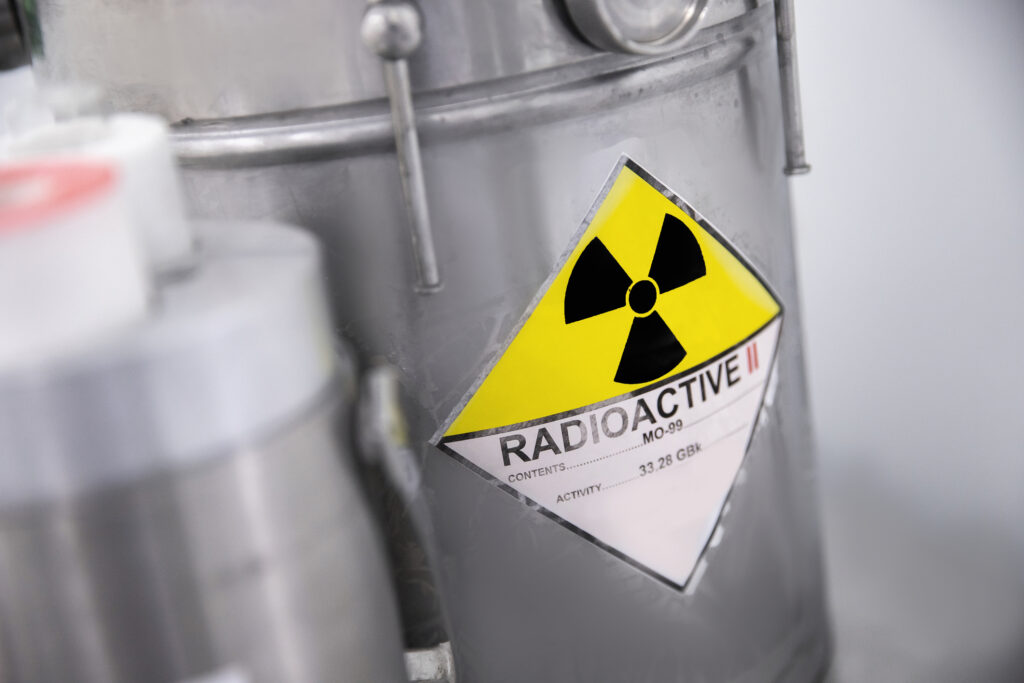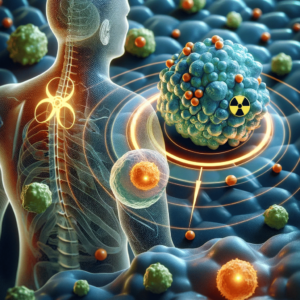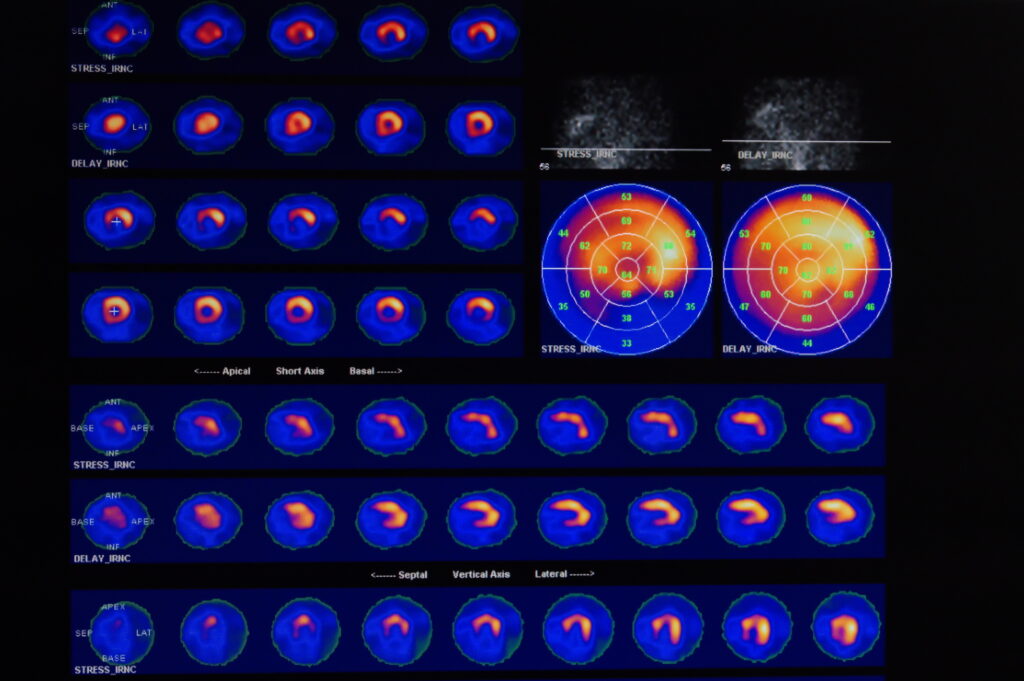Zirconium radiopharmaceuticals revolutionise nuclear medicine with advanced diagnostics and targeted therapies, heralding a new era in personalised healthcare.
Introduction to Zirconium-89 Radiopharmaceuticals
Radiopharmaceuticals represent a unique and critical branch of medical science, merging the fields of nuclear chemistry and medicine. These specialised pharmaceuticals are compounds or drugs that contain a radioactive isotope, used predominantly in the field of nuclear medicine. Their primary application is in diagnosing and treating various diseases, notably cancers, cardiovascular diseases, and certain neurological conditions. The mechanism of action in radiopharmaceuticals involves the emission of radiation, which can be detected and used for imaging or can deliver therapeutic doses of radiation to target tissues.
Zirconium, a lustrous, grey-white, strong transition metal, plays a pivotal role in the development of advanced radiopharmaceuticals. Among its isotopes, zirconium-89 (Zr-89) has emerged as particularly significant. With a half-life of approximately 78.4 hours, Zr-89 is well-suited for integration into antibodies and other large molecules used in targeted therapy and diagnostic imaging. This compatibility is chiefly due to its suitable decay properties and its ability to provide clear and precise imaging results, especially in Positron Emission Tomography (PET) scans.
The significance of zirconium-based radiopharmaceuticals lies in their dual utility in both diagnostic imaging and therapeutic applications. They offer a non-invasive method to visualise and track biological processes at the molecular and cellular levels in real-time. This dual functionality is increasingly important in personalised medicine, where the ability to diagnose, monitor, and potentially treat diseases with a single compound can lead to more effective and tailored patient care. Therefore, zirconium radiopharmaceuticals stand at the forefront of modern nuclear medicine, offering innovative solutions and new hope in diagnosing and treating complex diseases.
Early Use of Radiopharmaceuticals in Medicine
The inception of radiopharmaceuticals in medicine dates back to the early 20th century, following the discovery of radioactivity by Henri Becquerel and the pioneering work of Marie and Pierre Curie. The first practical medical application of radioactive substances emerged with the use of radium and radioiodine. In the 1930s, radioiodine was first used to treat hyperthyroidism and thyroid cancer, marking the birth of therapeutic radiopharmaceuticals.
The progression to diagnostic applications occurred with the development of the gamma camera by Hal Anger in the 1950s, which enabled the visualisation of radioactive substances within the body. This innovation led to the use of various isotopes in scanning different organs and tissues, laying the foundation for nuclear medicine as it is known today.
Zirconium Isotopes in Medical Applications
Zirconium entered the radiopharmaceutical arena much later. Its potential in medical applications began to be recognised with the development of positron emission tomography (PET), a sophisticated imaging technique that emerged in the 1970s. PET imaging necessitated isotopes that emitted positrons, and zirconium-89, with its positron-emitting properties and suitable half-life, became a candidate for PET imaging applications.
The use of Zr-89 was propelled by its ability to be stably attached to monoclonal antibodies, which are used to target specific types of cancer cells. The relatively long half-life of Zr-89 allows for the prolonged biological processes involved in antibody targeting, making it an ideal isotope for imaging cancers over several days.
Technological Advancements Facilitating the Use of Zirconium
Several technological advancements have driven the integration of zirconium isotopes into medical applications:
- Cyclotron Production: The production of Zr-89 became feasible with the advancement of cyclotron technology. Modern cyclotrons are capable of producing medical-grade Zr-89 in sufficient quantities and purity for clinical use.
- Chemistry and Radiolabelling Techniques: The development of sophisticated chemistry methods for attaching Zr-89 to biological molecules without affecting their biological activity has been crucial. This includes the creation of chelating agents that can securely hold the zirconium atom and link it to antibodies or other targeting molecules.
- Imaging Technology: Improvements in PET imaging technology, including better resolution, faster scanning times, and advanced data analysis software, have enhanced the ability to use Zr-89 labelled compounds for detailed and accurate diagnostic imaging.
- Regulatory Approvals and Safety Protocols: Establishing regulatory guidelines and safety protocols for handling and using radioactive materials in medicine has also been vital. These regulations ensure the safe production, transport, and administration of zirconium-based radiopharmaceuticals.
Together, these advancements have paved the way for the effective use of zirconium isotopes in modern medicine, particularly in the fields of oncology and molecular imaging.
Detailed Description of Zirconium Isotopes with a Focus on Zr-89
Zirconium isotopes, particularly zirconium-89 (Zr-89), have gained prominence in the field of nuclear medicine. Zr-89 is a positron-emitting radionuclide with a relatively long half-life of about 78.4 hours (approximately 3.3 days). This isotope is produced in a cyclotron through the proton bombardment of natural yttrium (Y-89). Zr-89 longer half-life is particularly suited for labelling monoclonal antibodies, which typically require more time to localise in target tissues compared to smaller molecules.
Physical and Chemical Properties Relevant to Medical Use
- Half-life: The 78.4-hour half-life of Zr-89 is advantageous for medical imaging, especially for PET scans. This extended half-life allows for the observation of biological processes over several days, which is essential for tracking slow-moving biological molecules like monoclonal antibodies.
- Radiation Type: Zr-89 emits positrons, which are anti-electrons. When a positron encounters an electron, annihilation occurs, producing gamma rays detectable by PET scanners. This property makes Zr-89 an ideal candidate for high-resolution PET imaging.
- Chemistry: Zirconium is a transition metal and can form stable complexes with chelating agents. This property is crucial for attaching Zr-89 to biological molecules without altering their biological activity. The commonly used chelator for Zr-89 is desferrioxamine B (DFO), which forms a stable complex with the isotope.
Comparative Analysis with Other Radiometals Used in Medicine
- Technetium-99m (Tc-99m): Tc-99m is the most commonly used radiometal in diagnostic imaging, particularly for SPECT (Single Photon Emission Computed Tomography) scans. It has a much shorter half-life (about 6 hours) than Zr-89, making it suitable for rapid imaging procedures. However, its short half-life limits its use with slower biological processes.
- Gallium-68 (Ga-68): Ga-68, used in PET imaging, has a very short half-life of about 68 minutes. It is ideal for rapid diagnostic procedures but unsuitable for applications requiring prolonged observation periods, like those involving monoclonal antibodies, where Zr-89 is more advantageous.
- Lutetium-177 (Lu-177): Lu-177 is used in therapeutic radiopharmaceuticals for treating conditions like neuroendocrine tumours. Unlike Zr-89, which is primarily diagnostic, Lu-177 emits beta particles, which are effective in radiation therapy.
- Copper-64 (Cu-64): Cu-64 has both diagnostic and therapeutic applications due to its decay characteristics (emitting both positrons and beta particles). It has a half-life of about 12.7 hours, bridging the gap between short-lived isotopes like Ga-68 and longer-lived ones like Zr-89.
Zr-89 stands out due to its longer half-life, suitability for labelling larger molecules, and high-quality imaging capabilities. Its use in PET scans for tracking slow biological processes, particularly in oncology, highlights its unique place in the array of radiometals in medical applications.
Methods of Producing Zirconium Isotopes
Cyclotron Production of Zr-89
One of the primary methods for producing zirconium-89 (Zr-89) is through cyclotron irradiation. The process involves bombarding a target, typically natural yttrium (Y-89), with protons in a cyclotron. This proton bombardment induces a nuclear reaction that transforms Y-89 into Zr-89. The specific reaction is typically 89Y(p,n)89Zr. After irradiation, the Zr-89 is chemically separated from the yttrium target. This separation process is crucial because it must produce Zr-89 of high purity and specific activity suitable for medical use.
Chemical Processes in Synthesizing Zirconium-Based Compounds
The process of attaching Zr-89 to biological molecules (like antibodies or peptides) is known as radiolabelling. This involves two main steps:
- Chelation: Zr-89 is first bound to a chelating agent. The commonly used chelator for Zr-89 is desferrioxamine B (DFO), which forms a stable complex with Zr-89. The choice of chelator is critical as it must form a stable and inert complex with Zr-89 to prevent the release of the isotope within the body.
- Conjugation: The Zr-89-DFO complex is then conjugated to the biological molecule. This conjugation must be done in a way that does not significantly alter the biological function of the molecule.
Challenges and Breakthroughs in the Synthesis Process
- Purity and Specific Activity: Ensuring high purity and specific activity of Zr-89 is a major challenge. Trace metal contaminants can interfere with the radiopharmaceutical’s radiolabelling process or biological targeting.
- Stable Conjugation: Achieving stable and efficient conjugation of Zr-89 to biological molecules without affecting their biological activity is complex.
- Regulatory Compliance: Adhering to stringent regulatory standards for producing and handling radioactive materials is challenging, especially in a clinical setting.
Breakthroughs
- Advanced Separation Techniques: Innovations in separation techniques have enabled the production of Zr-89 with higher purity and specific activity.
- Improved Chelators: The development of more efficient chelators, beyond DFO, that can form more stable complexes with Zr-89 has enhanced the stability and bio-distribution of Zr-89 labelled compounds.
- Automated Synthesis Modules: The advent of automated synthesis modules for radiolabelling has streamlined the process, reducing the risk of contamination and ensuring consistency in production.
These advancements in production and synthesis techniques have significantly contributed to the feasibility and reliability of using Zr-89 in clinical applications, paving the way for more effective diagnostic and therapeutic radiopharmaceuticals.
The Role of Zirconium in PET Imaging
Zirconium, particularly zirconium-89 (Zr-89), plays a critical role in PET imaging, a sophisticated medical imaging technique. PET scans are used to observe metabolic processes in the body by detecting the gamma rays emitted as a result of positron annihilation. Zr-89, being a positron emitter, is ideally suited for PET imaging. When Zr-89 is attached to a molecule that targets specific cells or receptors in the body, such as a monoclonal antibody, it can effectively illuminate areas of interest in PET scans, providing detailed images of cellular-level processes.
Advantages of Zirconium-Based Tracers in Oncology, Cardiology, and Neurology
- Oncology:
- Targeted Imaging: Zr-89 labelled tracers can target specific cancer cells, enabling the visualisation of tumours and metastases with high specificity.
- Monitoring Treatment Response: They are used to assess the efficacy of therapies, such as tracking the biodistribution of monoclonal antibodies in cancer treatment.
- Longer Observation Windows: The long half-life of Zr-89 allows for prolonged imaging periods, suitable for slow biological processes like tumour accumulation and antibody-targeting.
- Cardiology:
- Inflammation Tracking: Zr-89 labelled compounds can be used to identify areas of inflammation in cardiovascular diseases.
- Atherosclerotic Plaque Imaging: They can aid in imaging atherosclerotic plaques, potentially helping in assessing the risk of cardiac events.
- Neurology:
- Brain Tumour Imaging: Zr-89 can be used in imaging brain tumours, especially in assessing the efficacy of novel therapies.
- Neuroinflammation Studies: It may have the potential to study neuroinflammatory processes in conditions like Alzheimer’s disease.
Case Studies and Clinical Trials Showcasing the Efficacy of Zr-89 Labelled Compounds
- Breast Cancer Imaging: In a clinical trial involving breast cancer patients, Zr-89 labelled trastuzumab (a monoclonal antibody) was used to detect HER2-positive metastases. The study demonstrated that Zr-89-trastuzumab PET imaging could identify small metastases not easily detected by conventional imaging methods.
- Lymphoma Treatment Monitoring: Another study used Zr-89 labelled rituximab (an antibody used in lymphoma treatment) to evaluate its distribution in patients. The results showed that this imaging method could provide valuable information on the biodistribution and tumour uptake of rituximab, aiding in personalised treatment planning.
- Neurological Applications: Although in early stages, research involving Zr-89 labelled compounds in neurology has shown promise. For instance, a study exploring Zr-89 labelled tracers targeting amyloid plaques in Alzheimer’s disease models indicated potential for early detection and monitoring of disease progression.
These examples underscore the growing importance of Zr-89 in PET imaging across various medical fields, especially in enhancing our understanding and management of complex diseases like cancer and Alzheimer’s disease. The specificity, extended imaging capability, and versatility of Zr-89 labelled compounds make them invaluable tools in modern diagnostic imaging.
Use of Zirconium Compounds in Targeted Radiotherapy
Zirconium compounds, particularly those labelled with zirconium-89 (Zr-89), have been explored for their potential use in targeted radiotherapy. While Zr-89 itself is predominantly used for diagnostic imaging due to its positron emission, the concept of using zirconium or its isotopes in targeted radiotherapy revolves around delivering a therapeutic dose of radiation directly to cancer cells while minimising damage to healthy tissues.
Current Research in Using Zirconium for Treatment of Specific Cancers
- Breast Cancer: Research has been conducted on using Zr-89 labelled compounds to target and treat breast cancer, especially in cases where the cancer expresses specific markers, such as HER2. By attaching Zr-89 to antibodies targeting these markers, researchers aim to deliver a targeted radiation dose to the cancer cells.
- Prostate Cancer: Studies involving zirconium-based compounds are underway to target prostate-specific membrane antigen (PSMA), a protein commonly found on prostate cancer cells. These studies focus on using zirconium isotopes to deliver targeted radiotherapy to prostate cancer cells.
- Lymphoma: Similar to breast and prostate cancers, lymphomas that express specific antigens are being targeted in research studies using Zr-89 labelled antibodies to deliver targeted radiation therapy to the malignant cells.
Future Potential for Zirconium in Combined Diagnostic and Therapeutic Agents (Theranostics)
The concept of theranostics – combining therapeutic and diagnostic capabilities in a single agent – is a rapidly growing field in personalised medicine. Zirconium, particularly Zr-89, holds significant potential in this area for several reasons:
- Dual Functionality: Zr-89 ability to be used for PET imaging and its potential in targeted therapy make it an ideal candidate for developing theranostic agents.
- Personalised Treatment: Zr-89 labelled compounds can be used to diagnose and assess the extent of the disease and deliver targeted therapy to the same sites, allowing for more personalised and effective treatment plans.
- Research and Development: Ongoing research into novel zirconium-based theranostic agents focuses on cancers where current treatment options are limited or targeted therapies could significantly improve outcomes. This includes hard-to-treat cancers and metastatic diseases.
- Advances in Radiolabelling: The development of more sophisticated radiolabelling techniques that allow for the stable attachment of therapeutic radioisotopes to targeting molecules (such as antibodies) paves the way for the practical application of zirconium-based theranostics.
The use of zirconium compounds in targeted radiotherapy is an area of active research with potential applications in various types of cancers. The future of zirconium in theranostics looks promising, offering a novel approach to cancer diagnosis and treatment that is more targeted, efficient, and personalised.
Safety Profile of Zirconium Radiopharmaceuticals
The safety of zirconium radiopharmaceuticals, particularly those involving zirconium-89 (Zr-89), is a critical consideration in their use for medical applications. These compounds have demonstrated a favourable safety profile in clinical trials, but like all radiopharmaceuticals, they must be used with caution due to their radioactive nature.
- Radiation Exposure: The primary safety concern with radiopharmaceuticals is exposure to radiation. However, Zr-89 emissions are relatively low energy, and its positron emission is suitable for PET imaging, which typically involves lower radiation doses compared to other nuclear medicine procedures.
- Biological Effects: The biological impact of Zr-89 is continually studied, especially its biodistribution and clearance from the body. The goal is to ensure minimal accumulation in non-target tissues to reduce potential side effects.
- Dosimetry: Accurate dosimetry, which involves calculating the radiation dose absorbed by various tissues, is crucial. This helps in optimising the dose to balance diagnostic or therapeutic efficacy with safety.
Regulatory Landscape Governing the Use of Radioactive Materials in Medicine
- Regulatory Bodies: In the United States, the Food and Drug Administration (FDA) and the Nuclear Regulatory Commission (NRC) are key agencies overseeing the use of radiopharmaceuticals. Globally, other national and international regulatory bodies like the European Medicines Agency (EMA) and the International Atomic Energy Agency (IAEA) play similar roles.
- Approval Processes: Radiopharmaceuticals, including those based on zirconium, must undergo rigorous testing and clinical trials to gain regulatory approval. This process assesses their safety, efficacy, and quality.
- Manufacturing and Handling Regulations: Strict guidelines govern the production, handling, storage, and disposal of radioactive materials. These regulations are designed to protect healthcare workers, patients, and the environment from unnecessary radiation exposure.
Ethical Considerations in the Development and Application of Radiopharmaceuticals
- Informed Consent: Given the use of radioactive substances, obtaining informed consent from patients is crucial. Patients must be fully aware of the potential risks and benefits of radiopharmaceutical therapy or diagnostics.
- Risk-Benefit Analysis: Ethical considerations include evaluating the risks versus the potential benefits of radiopharmaceuticals, especially in cases where alternative, non-radioactive treatments are available.
- Access and Equity: The development and application of radiopharmaceuticals raise questions about access and equity, particularly in low-resource settings. Ensuring that advancements in this field benefit a wide range of populations is a key ethical concern.
- Research Ethics: Ethical research practices are essential, especially in clinical trials involving radiopharmaceuticals. This includes ensuring patient safety, data integrity, and adherence to regulatory standards.
While zirconium radiopharmaceuticals exhibit a promising safety profile, they are subject to comprehensive regulatory oversight and ethical considerations to ensure their safe and equitable use in medical practice.
Summary of the Importance of Zirconium in Nuclear Medicine
Zirconium, particularly zirconium-89 (Zr-89), has emerged as a significant element in the field of nuclear medicine. Its unique properties, including a favourable half-life and the ability to emit positrons, make it particularly suitable for PET imaging. Zr-89’s compatibility with monoclonal antibodies and other targeting molecules has enabled highly specific imaging of various cancers and other diseases, facilitating more accurate diagnoses and better patient management.
Reflection on Future Potential and Challenges
Future Potential
- Theranostics: Zirconium radiopharmaceuticals hold immense potential in the burgeoning field of theranostics, combining diagnostic and therapeutic capabilities within a single agent. This could revolutionise personalised medicine, allowing for targeted treatment strategies based on individual patient profiles.
- Broader Applications: Ongoing research is exploring the use of zirconium in various medical fields beyond oncology, including cardiology and neurology, potentially expanding its role in healthcare.
- Advanced Imaging Techniques: Zirconium-based tracers can enhance the resolution and accuracy of PET scans, leading to earlier detection of diseases and better monitoring of treatment responses.
Challenges
- Regulatory Hurdles: Navigating the complex regulatory landscape for approval of new radiopharmaceuticals remains a significant challenge.
- Cost and Accessibility: The production and utilisation of zirconium radiopharmaceuticals can be costly, potentially limiting accessibility, especially in resource-limited settings.
- Safety and Ethics: Ensuring the long-term safety of zirconium-based treatments and addressing ethical concerns related to radiation exposure continue to be important challenges.
Closing Thoughts on the Impact of Zirconium Radiopharmaceuticals in Healthcare
Zirconium radiopharmaceuticals represent a significant advancement in nuclear medicine, offering more precise and targeted diagnostic and therapeutic options. Their development and use underscore the ongoing evolution in medical technology, striving towards more personalised and effective patient care. While challenges remain, the potential of zirconium in transforming diagnostic imaging and treatment paradigms is undeniable. As research progresses and these compounds become more integrated into clinical practice, they are poised to make substantial contributions to healthcare, enhancing the ability to diagnose, monitor, and treat a variety of diseases with greater precision and efficacy.
Disclaimer
Zirconium Radiopharmaceuticals in Nuclear Medicine is published by Open Medscience for general informational and educational purposes only. While every effort has been made to ensure the accuracy and currency of the content at the time of publication, no guarantee is made as to its completeness, reliability, or fitness for any specific purpose. This article does not constitute medical, diagnostic, or therapeutic advice and should not be used as a substitute for consultation with qualified healthcare professionals.
Zirconium-89 and other radiopharmaceuticals discussed herein involve the use of radioactive materials and should only be handled by trained specialists within licensed facilities, in compliance with all relevant regulatory frameworks, including but not limited to the IAEA, EMA, FDA, and national nuclear safety authorities. The information provided is not intended to encourage the unauthorised use, production, or distribution of radioactive substances.
Open Medscience, its authors, and contributors expressly disclaim any liability for injury, loss, or damage of any kind incurred as a result of the use or reliance upon any information contained in this article. Readers are advised to independently verify any information and seek appropriate professional guidance before undertaking any action based on the content.
This article may include references to clinical studies or trials which are ongoing, investigational, or not yet approved for general clinical use. No endorsement is implied for any specific product, compound, or manufacturer mentioned.
Use of this publication implies agreement to these terms. If you do not accept these conditions, you are advised not to rely on any part of this material.
You are here: home » diagnostic medical imaging blog »



